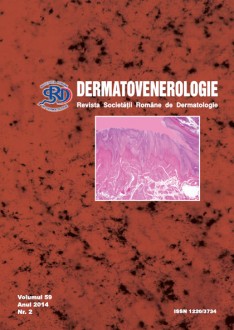Background Elephantiasis nostras verrucosa (ENV) represents a group of disorders whose main clinical feature is chronic lymphedema of the lower legs (more frequently) associated with cutaneous papular, nodular or verrucous lesions and induration, that progressively evolves towards debilitating deformity.
Case studies
We present three male patients aged between 61 and 79 years who developed ENV of the lower legs, that occured in the context of an advanced stage chronic venous insufficiency and associated local infectious complications, cardio-vascular comorbidities and/or obesity.
Discussions
The etiology of the morbid process in ENV is variable: non-phyllarial infections, or non-infectious. Thus, unlike “elephantiasis tropica” – caused by parasites endemic to the tropical countries, such as Wuchereria genus, ENV may be a consequence of recurrent streptococcal lymphangitis, recurrent erysipelas or cellulitis, trauma, surgery, radiotherapy, neoplasms, chronic venous stasis, obesity.
The pathogeny is unclear. However, protein rich interstitial fluid accumulation due to lymphostasis and the extravascular presence of activated leukocytes due to chronic venous stasis appear to stimulate fibroblast
proliferation and collagen synthesis that are responsible for dermal and subcutaneous fibrosis. Positive diagnosis relies on history and clinical exam. Disease progression leads to severe recurrent skin infections, subcutaneous tissue and bone infections, and a diminished life quality due to deformity and functional disability. Treatment aims at reducing lymphedema and preventing infectious complications. The debilitating deformity is possibly treated by surgical correction.
Conclusions
ENV is the result of chronic lymphedema of nonphyllarial infectious or non-infectious origin. Chronic venous insufficiency is an underrated risk factor which, together with recurrent bacterial lymphangitis and secondary lymphatic obstruction, contributes to accentuate dermal fibrosis. Recognizing this condition in its early stages and appropriately treating the risk factors ensures prevention of deformity which negatively impacts patient’s quality of life.


